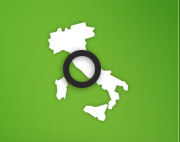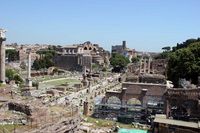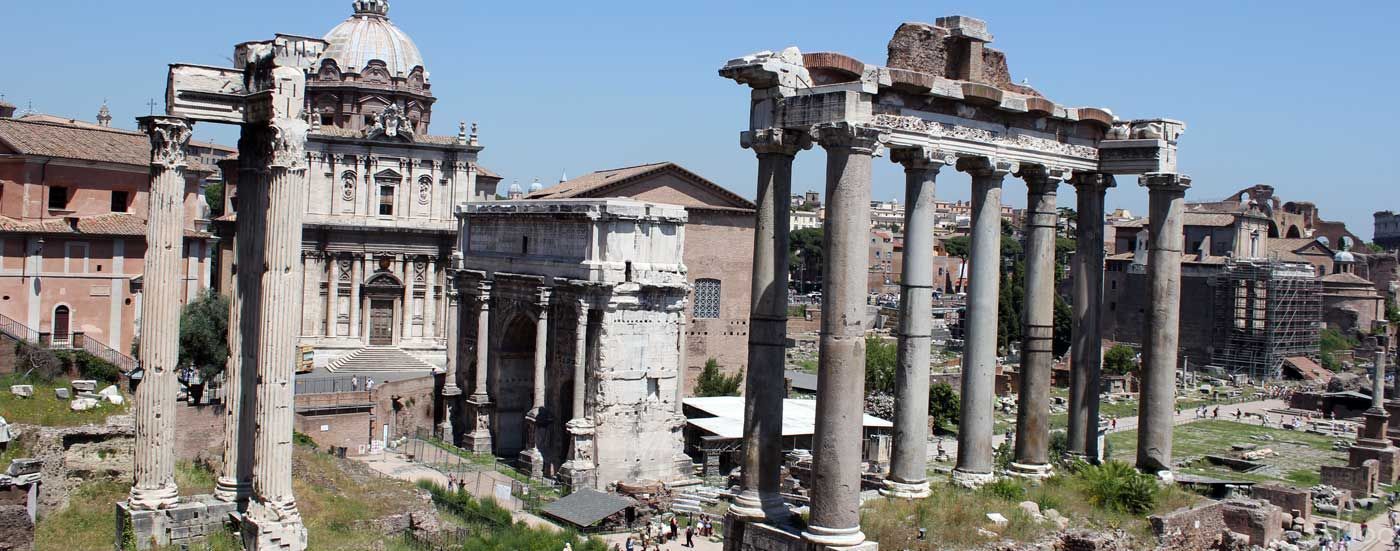Roman Forum
Archaeological site
Foro Romano - the Roman Forum
In the centre of the ancient metropolis
The former centre of the ancient world is a vast archaeological site with ancient ruins, fallen columns, temples, remains of walls, basilicas and triumphal arches. On this most impressive site, history was written for centuries and the fate of half of Europe was decided here. Where once marshy ground was situated between the hills of Rome, temples were first built after the land had dried and then additional meeting places, political, economic and other important buildings were built. The architectonic connection between religion, economics and politics represented a unique composition for that time. From the beginning of the kingdom until the end of the imperial era, the whole power of Rome was focused here. Senators, consuls and emperors vied for fame and prestige with still more splendid buildings. With the fall of the Western Roman Empire, the buildings gradually fell into disrepair and were used as a quarry. The area was used for the construction of churches, forts and even as a cow pasture, until the systematic excavation began in the 18th and 19th Century.
Tour through the Roman Forum: Arch of Titus and the Temple of Venus
We start our tour at the Colosseum and enter the Forum Romanum at the Arch of Titus (Arco di Tito). It was built in A.D. 81 in honour of the commander and Emperor Titus, who conquered Jerusalem in the Judean War and destroyed the temple there. To the right of the Arch of Titus you can see the remains of the Temple of Venus and of Roma. The biggest temple of ancient Rome was built by the Emperor Hadrian as a double sanctuary and was surrounded by a portico of 150 columns. Today the Basilica of Santa Francesca Romana stands on parts of the ancient temple. Its bell tower is a prime example of the Roman campanile of the Middle Ages. Worth seeing inside are the apse mosaic and the image of the Madonna on the high altar from the 6th Century. The latter was supposedly painted by Saint Luke himself - under the guidance of the Mother of God - and established the traditional membership of painters in the Guild of St. Luke. The mighty ruins next to the church belong to the Basilica of Maxentius, a monumental courthouse from the 4th Century.
Temple of Faustina and Antoninus Pius, Temple of Caesar and Basilica Aemilia
If you continue along the Basilica dei Santi Cosma e Damiano with the small round building, you will reach the temple of Faustina and Antoninus Pius. It was built in A.D. 141 in honour of Antoninus Pius and his deified wife Faustina. The Temple of Caesar is located to the left. It was built in 42 B.C. at the spot where Caesar's body was burned. Immediately behind it lies the wide area of the Basilica Aemilia. The once mighty basilica was built by the consul Marcus Aemilius Paulus in A.D. 78 and was used as a courtroom. The Greek word “basilica” actually means king hall and was later used by the Christians as an example for powerful church houses.
Curia, the Arch of Septimius Severus and Rostra
Immediately after the Basilica Aemilia rises the Curia, the meeting hall of the Roman Senate and the best-preserved ancient buildings of the Roman Forum. The former centre of power of Rome was converted into the church of San Adriano in the 7th Century and is therefore almost in antique-preserved condition. It was believed for a long time that Romulus’ grave was to be found under the square in front of the Curia. The subsequent triumphal arch of the Emperor Septimius Severus was built in 203 and was erected in honour of his victories against the Parthians and the desert tribes. Left next to the arch is the Rostra, an ancient speaker’s platform that was formerly adorned with the beaks (rostra) of the captured ships. Directly behind the speaker's platform you can see the Mundus in the ground, a round base which symbolized the symbolic centre of Rome and the Roman Empire.
Five Pillars Monument of Diocletian, Temple of Saturn, Phocas column and Basilica Iulia
From the Mundus you can see the remains of the five pillars monument in honour of the 20th anniversary of the jubilee of the reign of the Emperor Diocletian and the 10th anniversary of the Tetrarchy. Directly behind it rise the pillars of the temple of Saturn, the first temple in the Roman Forum. It was already built 498 B.C. and was one of the most important sanctuaries of the Republic. Next to the Temple of Saturn is a fragment of the Milliarium aureum, the golden milestone. It marked the beginning and end of all Roman roads and displayed in golden numerals the distance between Rome and all its provinces. If you now return to the road again, you see the 14-metre high Corinthian Phocas column from 608 on the left side. It was the last building that was built in ancient Rome - in honour of the Byzantine Emperor Phocas, who abdicated the Pantheon to the Pope as a church. The area on the right hand side belonged to the Basilica Iulia, which was built as a jury by Julius Caesar in 46 B.C.
Temple of Castor and Pollux, Santa Maria Antiqua and Temple of Vesta
At the next intersection you will reach the temple of Castor and Pollux, the Dioscuri, on the right hand side. In the neighbouring sanctuary of the water nymph Juturna they found the statues of the twins as well as one of the god Asclepius. A visit to the church of Santa Maria Antiqua behind the Dioscuri temple is worthwhile. The badly damaged church is the oldest and most important Christian building in the Roman Forum and dates from the 6th Century. It was built on the foundations of an imperial building and has beautiful murals from the 6th – 8th Century in its interior - including a beautiful representation of the Maria and an Old Testament cycle of paintings in the left aisle. On the way back to the starting point you will pass the circular Temple of Vesta and the connected house of the Vestal Virgins. The sacred fire was kept here, from which all households of Rome used to get their fire. The noblest maidens of the city were allowed to watch here over the fire as priests. Just before the exit, you can now turn right to the Palatine, the most prestigious residential and government centre of ancient Rome.
Entrance
Combined ticket with Colosseum and Palatin: € 12,-











Tweet